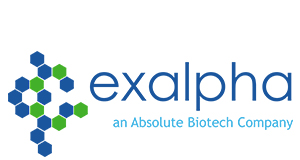Rabbit anti Human Clusterin
Rabbit anti Human Clusterin, Polyclonal, IgG
Artikelnummer
EXAX1788P
Verpackungseinheit
100 µg
Hersteller
Exalpha Biologicals Inc
Verfügbarkeit:
wird geladen...
Preis wird geladen...
Background: Clusterin, also known as Apolipoprotein J (ApoJ), is a ubiquitous multifunctional glycoprotein that can interact with a broad spectrum of molecules such as complement components, various receptors, and the AlzheimerÕs b-amyloid peptide (1). Clusterin expression is increased in AlzheimerÕs disease brain tissue and clusterin-immunoreactive amyloid plaques are found associated with phospho-tau-positive dystrophic neurites (2) and it has been suggested that clusterin facilitates the conversion of diffuse b-amyloid deposits into amyloid and enhances tau phosphorylation in neurites around these plaques. Other reports show that clusterin expression is decreased in proliferating cells and is upregulated in quiescent and senescent cells, suggesting that it may also play a role in aging and tumorigenesis suppression (3). Clusterin exists in at least two distinct isoforms.
Positive Control: Human Brain Tissue Lysate used as positive control.
Clusterin is known to be expressed in a variety of tissues and it seems to be able to bind to cells, membranes and hydrophobic proteins.
Immunogen: Rabbit polyclonal Clusterin antibody was raised recombinant human Clusterin isoform 1.
Purification Method: Antigen Immunoaffiinity Purification.
Formulation: Provided as solution in phosphate buffered saline with 0.02% sodium azide.
References: 1) Calero M, Rostagno A, Frangione B, et al. Clusterin and Alzheimer’s disease. Subcell. Biochem. 2005; 38:273-98.
2) Martin-Rehrmann MD, Hoe HS, Capuani EM, et al. Association of apolipoprotein J-positive beta-amyloid plaques with dystrophic neurites in Alzheimer’s disease brain.Neurotox. Res. 2005; 7:231-42
3) Trougakos IP and Gonos ES. Clusterin/Apolipoprotein J in human aging and cancer. Int. J. Biochem. Cell Biol. 2002; 34:1430-48.
4) Martinon F and Tschopp J. NLRs join TLRs as innate sensors of pathogens.TRENDS Imm. 2005; 26:447-54.
UniProt: P10909.
Caution: This product is intended FOR RESEARCH USE ONLY, and FOR TESTS IN VITRO, not for use in diagnostic or therapeutic procedures involving humans or animals.
Positive Control: Human Brain Tissue Lysate used as positive control.
Clusterin is known to be expressed in a variety of tissues and it seems to be able to bind to cells, membranes and hydrophobic proteins.
Immunogen: Rabbit polyclonal Clusterin antibody was raised recombinant human Clusterin isoform 1.
Purification Method: Antigen Immunoaffiinity Purification.
Formulation: Provided as solution in phosphate buffered saline with 0.02% sodium azide.
References: 1) Calero M, Rostagno A, Frangione B, et al. Clusterin and Alzheimer’s disease. Subcell. Biochem. 2005; 38:273-98.
2) Martin-Rehrmann MD, Hoe HS, Capuani EM, et al. Association of apolipoprotein J-positive beta-amyloid plaques with dystrophic neurites in Alzheimer’s disease brain.Neurotox. Res. 2005; 7:231-42
3) Trougakos IP and Gonos ES. Clusterin/Apolipoprotein J in human aging and cancer. Int. J. Biochem. Cell Biol. 2002; 34:1430-48.
4) Martinon F and Tschopp J. NLRs join TLRs as innate sensors of pathogens.TRENDS Imm. 2005; 26:447-54.
UniProt: P10909.
Caution: This product is intended FOR RESEARCH USE ONLY, and FOR TESTS IN VITRO, not for use in diagnostic or therapeutic procedures involving humans or animals.
| Artikelnummer | EXAX1788P |
|---|---|
| Hersteller | Exalpha Biologicals Inc |
| Hersteller Artikelnummer | X1788P |
| Green Labware | Nein |
| Verpackungseinheit | 100 µg |
| Mengeneinheit | STK |
| Reaktivität | Human |
| Klonalität | Polyclonal |
| Methode | Western Blotting |
| Isotyp | IgG |
| Wirt | Rabbit |
| Produktinformation (PDF) | Download |
| MSDS (PDF) | Download |

 English
English






